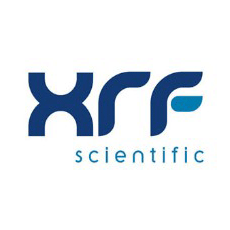Fusion fluxers are sample preparation instruments that can be used for both X-ray fluorescence (XRF) and inductively coupled plasma (ICP) analysis. Both of these analytical methods allow researchers to accurately assess the elemental composition of solid samples. For example, XRF analysis is a useful tool for the quality control of construction materials, such as iron and cement, whereas ICP spectroscopy can be used for numerous specialized applications. Despite their advantages, both of these analytical methodologies require that samples are prepared as either near-homogenous or high-purity heterogenous mixtures prior to analysis in order to ensure the greatest accuracy.
Without utilizing fusion flux preparation prior to both XRF and ICP spectroscopic analysis, inaccurate results can be produced. Without prior preparation by fusion flux, unfinished solid samples will exhibit surface variations that can interfere with an XRF spectrometer’s calibration. In a similar manner, unprepared liquid samples could display irrelevant trace elements that can disrupt the accuracy of the results produced by ICP. Fusion fluxers are capable of reducing these margins of error, all the while providing precise insights into sample XRF reactions and plasma ionization.
.jpg)
XRF Fusion Fluxer
After a solid sample has been crushed, it is then weighed into a platinum crucible and dosed with an exact ratio of a lithium borate (Li2B4O7) fusion flux mixture. Once the mixture is prepared, it is then transferred to the furnace chamber of the fusion fluxer that is typically comprised of a thermally resistant ceramic cradle to suspend the sample crucibles in the furnace chamber thereby ensuring no contamination is introduced to the sample.
A gas or electricity energy source is used to generate temperatures of up to 1250 °C (2282 °F) to melt the sample and flux into a molten eutectic mixture. The ceramic cradle may be programmed to rock the molten mixture to allow for the fusion process to occur prior to mechanically pouring the mixture into a platinum-casting dish. At this point, the sample is cooled and hardened into a glass disc.
ICP Fusion Fluxer
ICP sample preparation requires a similar procedure; however, for this analytical method, samples are prepared as heterogenous liquid mixtures rather than as discs. In a similar manner, the powdered solid sample is dosed with a lithium borate fusion mixture and placed within the ceramic cradle. The fusion fluxer then heats and agitates the mixture to encourage the sample to dissolve before being poured into a magnetically stirred beaker that contains an acidic solution.
Fusion Fluxers from XRF Scientific
XRF Scientific offers a wide range of fusion fluxers that are capable of preparing samples for both XRF and ICP analysis, of which include:
- Modutemp Shaking Fusion Furnace: a high-volume glass bead processing furnace.
- Continuous upper use limit of 1250 °C
- Throughput of up to 30 beads/hour
- xrFuse 1: a compact electric fusion fluxer
- Seamless process flexibility for specialized applications
- Standard model is capable of preparing glass beads for both XRF or ICP analysis
- xrFuse 2: a robust, automated fusion fluxer
- Continuous upper use limit of 1200 °C (2192 °F)
- Optional ICP solutions module
- xrFuse 6: a high throughput automated electric fusion fluxer
- Throughput of up to 30 beads/hour
- Comes with 12 distinct programmable recipes;
- Phoenix II: an innovative gas-powered fusion fluxer
- Continuous upper use limit of 1250 °C
- 20 programmable recipes for both XRF and ICP sample preparation

This information has been sourced, reviewed and adapted from materials provided by XRF Scientific.
For more information on this source, please visit XRF Scientific.